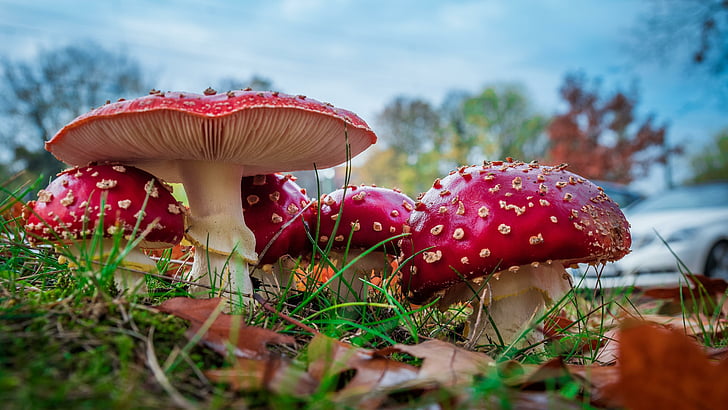The vividly hued fly agaric mushroom, scientifically known as amanita muscaria, has captured human fascination for centuries. Its iconic red cap, speckled with white dots, is not just a fixture of fairy tale illustrations but also a significant element in the annals of folk medicine across various cultures. Despite its toxic reputation, this mushroom’s medicinal properties have been harnessed through careful and traditional practices, revealing a complex relationship between humans and natural psychoactive substances.
Historical Context of Amanita Muscaria
The use of fly agaric dates back to ancient times, particularly among the indigenous peoples of Siberia. Here, it was valued not only for its psychoactive effects but also for its potential to treat physical ailments. The shamanic tribes of Siberia developed methods to detoxify the mushroom, reducing its harmful components while preserving beneficial effects. These methods often included drying the caps of the mushroom to decrease its toxicity.

Detoxification and Preparation Techniques
The primary psychoactive compounds in fly agaric are ibotenic acid and muscimol. Ibotenic acid can cause severe neurotoxic effects, but when the mushroom is dried, this compound converts into the less harmful muscimol, which is responsible for the mushroom’s psychoactive properties. Traditionally, the mushrooms were either dried in the sun or over a fire, a process that enhanced their safety for consumption. In some practices, the dried caps were then ground into a powder, making it easier to control dosages and integrate into various medicinal concoctions.
Modern Applications in Folk Medicine
In contemporary folk medicine, the emphasis on natural and holistic treatments has revived interest in substances like fly agaric. Modern adherents use it in several forms, including powder and capsules, which allow for more precise dosing and easier consumption. Some practitioners advocate microdosing—taking small, sub-hallucinogenic doses of a psychoactive substance—as a method to tap into the cognitive and therapeutic benefits of fly agaric without inducing its full psychedelic effects.
Microdosing fly agaric is believed to help with a variety of conditions such as reducing anxiety, enhancing mood, and increasing physical endurance. These claims are typically grounded in anecdotal evidence rather than rigorous scientific research, reflecting the broader challenges of integrating traditional medicine with modern health care practices.
Safety and Regulatory Issues
It’s important to note that amanita muscaria is classified as a poisonous mushroom. Its use is not without risks, and incorrect preparation can lead to severe poisoning. Symptoms of fly agaric poisoning include nausea, vomiting, confusion, and in severe cases, seizures and coma. Therefore, its use in folk medicine requires careful adherence to traditional knowledge and practices regarding preparation and dosage.
In many countries, the sale and distribution of fly agaric are regulated, reflecting concerns about its safety and potential for abuse. However, products like Mushroom Mothers’ amanita muscaria capsules for microdosing are available, which purport to offer a controlled and safer means of exploring the medicinal potential of this mushroom. Such products typically undergo processes to ensure they contain controlled doses of muscimol while minimizing harmful compounds.
Ethnobotanical and Cultural Significance
The cultural significance of fly agaric extends beyond its medicinal use. It has been a spiritual symbol in many cultures, often associated with transcendence and the spirit world. This cultural dimension underscores the complex role that psychoactive plants and fungi can play in human societies, bridging the material and spiritual realms.
The story of fly agaric in folk medicine is a testament to the complex and sometimes precarious balance humans maintain with the natural world. While it offers potential health benefits, the risks associated with its use demand respect and caution. As interest in natural and alternative medicines continues to grow, substances like fly agaric serve as reminders of the richness of traditional practices and the need for careful scientific study and cultural understanding. As we explore these ancient remedies, it is crucial to blend respect for tradition with rigorous health and safety standards, ensuring that such practices can be safely integrated into modern medical paradigms.
















